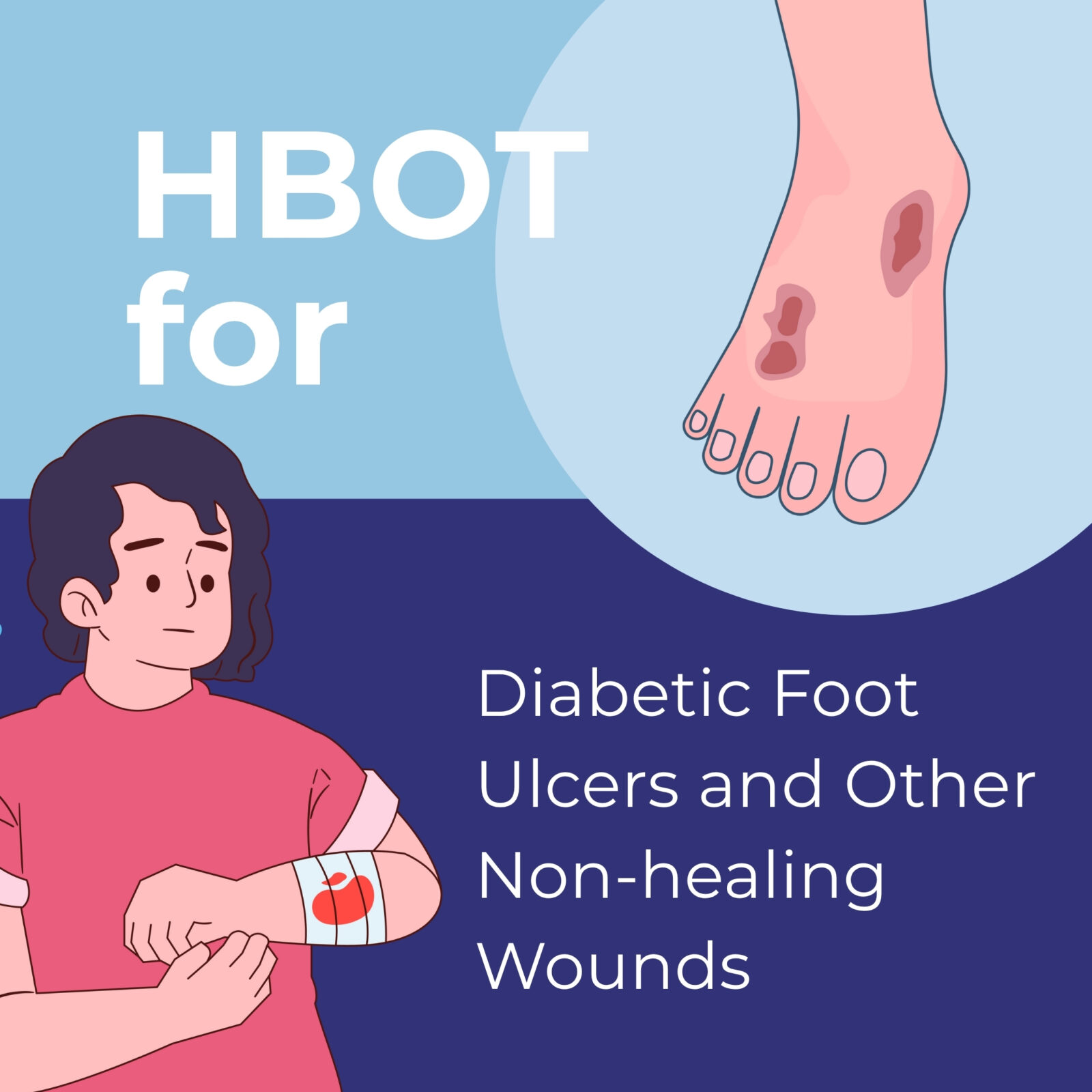
How Hyperbaric Oxygen Therapy Supports the Healing of Diabetic Foot Ulcers and Other Non-Healing Wounds
Introduction
Chronic wounds, such as diabetic foot ulcers, pose a serious health risk to millions of individuals—especially those living with diabetes. When traditional treatments fall short, Hyperbaric Oxygen Therapy (HBOT) has emerged as an effective, FDA-approved solution. By delivering pure oxygen in a pressurized environment, HBOT enhances the body’s natural healing processes and can significantly improve outcomes for patients with hard-to-heal wounds.
What Is Hyperbaric Oxygen Therapy?
Hyperbaric Oxygen Therapy involves breathing 100% oxygen in a specialized chamber where atmospheric pressure is increased up to three times higher than normal. This process allows the lungs to absorb more oxygen than would be possible at sea level, resulting in elevated oxygen levels in the blood and tissues. This oxygen-rich environment is critical in supporting cell repair, fighting infection, and reducing inflammation.
Why Diabetic Foot Ulcers Are Hard to Heal
Diabetic foot ulcers develop due to a combination of poor circulation, nerve damage (neuropathy), and impaired immune response—common complications of diabetes. These factors hinder the body’s ability to fight infection and repair tissue, making ulcers difficult to treat and slow to heal. Left untreated, diabetic foot ulcers can lead to severe infections, hospitalization, or even amputation.
How HBOT Supports Wound Healing
HBOT plays a vital role in overcoming the challenges of poor wound healing in several key ways:
- Enhanced Oxygen Delivery: By flooding damaged tissues with oxygen, HBOT promotes the growth of new blood vessels (angiogenesis) and stimulates collagen production, both essential for tissue regeneration.
- Reduced Swelling and Inflammation: HBOT helps decrease inflammation around the wound, improving blood flow and allowing the immune system to work more effectively.
- Increased White Blood Cell Activity: Oxygen supports the function of white blood cells, enhancing the body’s ability to fight off bacteria and reduce infection.
- Improved Response to Antibiotics: HBOT can make certain antibiotics more effective by improving oxygen-dependent drug uptake in tissues.
Conditions Beyond Diabetic Ulcers
While diabetic foot ulcers are one of the most common reasons for HBOT, it is also used to treat other non-healing wounds, such as:
- Pressure sores (bedsores)
- Radiation-induced tissue injuries
- Surgical wounds that won’t close
- Skin grafts or flaps at risk of tissue death
- Crush injuries
A Safe and Proven Treatment
HBOT is FDA-approved for treating diabetic foot ulcers that are resistant to standard therapies. It is non-invasive, well-tolerated, and typically administered over multiple sessions based on a patient’s unique needs.
Conclusion
For those suffering from chronic, non-healing wounds—especially diabetic foot ulcers—Hyperbaric Oxygen Therapy offers a promising path toward recovery. By enhancing oxygen delivery to compromised tissues, HBOT supports faster, more complete healing and reduces the risk of serious complications.